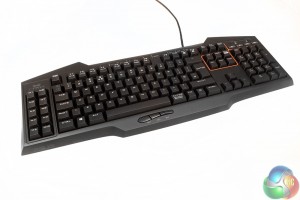
The Asus STRIX Tactic Pro is a quite a striking looking keyboard, thanks in part to the unique shape. It has rounded, but pointed corners to it, with an edge that falls off at an angle – less than 90 degrees.
It is uniform matt black across both the keyboard base and the keys themselves, with a soft plastic feel across all surfaces. The only colouring (before lighting) is a thin orange line that separates off the media buttons and the control pad keys.
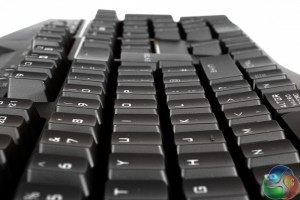
The keys, like most that offer backlighting, feature clear plastic lettering to allow the LED hidden beneath to shine through.
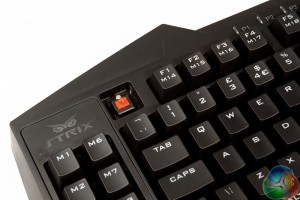
As I mentioned before, this version of the STRIX Tactic Pro uses red Cherry MX switches. The LED for the backlighting can be seen just above it. Located on the far left hand side are 10 full size macro keys, which can be used for a variety of functions, directly controlled by the back-end software.
Key caps are easy to remove thanks to the included tool, making it a doddle to replace your favourite four with the included orange alternatives if you so wish.
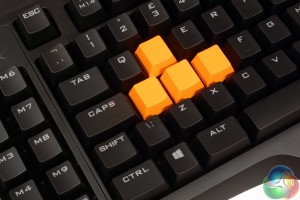
While you may have your own alternatives, I imagine this would be the most common configuration.
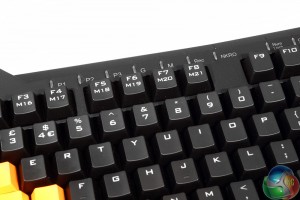
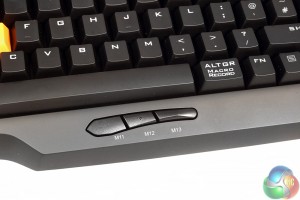
As well as the 10 dedicated ones on the far left of the board, there are a further eight offered as an alternate function of the F keys, F1 through F8.
Similarly so, there are three dedicated push button macro keys located below the space bar. They do not rest easily under your thumb and might be more useful for the larger handed gamers out there.
Over on the far right hand side, the media keys are located, offering play/pause, mute and forward and backward skip function. There is also a scroll wheel for volume control.
The underside of the STRIX Tactic Pro is pretty unremarkable, with the usual flip-up feet to angle it for those that prefer that set up. There are also small rubber feet located in specific places to make sure that the board does not slide around during use.
The cable for this keyboard is braided and features a gold plated connector with a unique looking header. This might make it a bit easier to identify with all the other mass of USB devices at the back of a PC.
 KitGuru KitGuru.net – Tech News | Hardware News | Hardware Reviews | IOS | Mobile | Gaming | Graphics Cards
KitGuru KitGuru.net – Tech News | Hardware News | Hardware Reviews | IOS | Mobile | Gaming | Graphics Cards


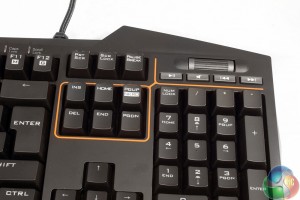
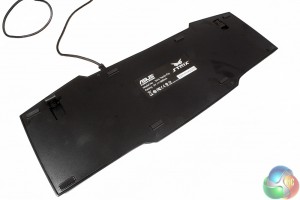
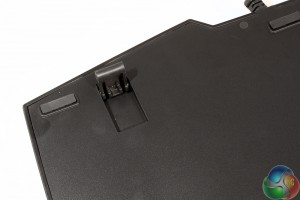
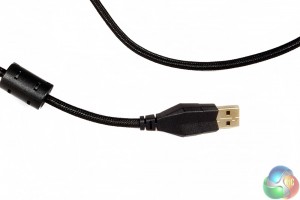

The interface is bad